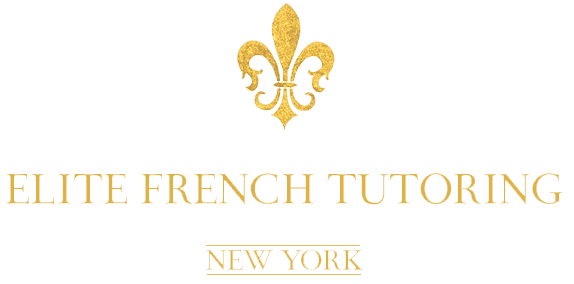Languages never stop changing. Finding good books to learn French can feel like chasing a moving target. The right learning materials can make a huge difference, whether you’re just starting out or working to improve your skills.
Learning French requires you to know between two to four thousand words. This might sound like a lot, but good French learning books make it totally doable.
I’ve tested countless books to learn French through the years. The options range from traditional textbooks to books that teach through stories.
My experience as a language teacher shows that every French learner has different goals. That’s exactly why I put together this list of the best French textbooks for 2025.
These aren’t random picks; they’ve gotten amazing feedback with 4.5 out of 5 stars from thousands of students. Let me show you these proven resources that will help you get better at French.
Table of Contents
Toggle1. Assimil French Method: The Teacher’s Favorite
Image Source: Amazon.com
Books for learning French are plentiful, but Assimil shines as a timeless favorite. Since 1929, this method has helped millions learn French. Language teachers respect it deeply because of its unique way of teaching French.
Why Language Teachers Love Assimil
Teachers keep recommending Assimil because it matches how we learn our first language naturally. Students develop a natural feel for French grammar instead of memorizing endless rules.
The results speak for themselves. Students start speaking French in two months and handle everyday talks after six months with 1,500-2,000 words. The program’s well-laid-out yet flexible style works great both in classrooms and for self-study.
Key Features and Benefits
Assimil’s success comes from its two-phase learning process. The first phase, called impregnation (lessons 1-49), lets you soak up the language through daily 30-40 minute sessions where you read, listen, and repeat. The second phase, activation (lesson 50 onwards), helps you create your own sentences.
The method offers these great features:
- Real-life dialogs that teach useful vocabulary
- Step-by-step progress that builds your confidence
- Review lessons every seventh lesson to unite what you’ve learned
- Clear notes about grammar and culture
- Native speakers recording all dialogs
Best for Which Learning Style
Self-motivated learners aged 15 and up thrive with Assimil – age won’t hold you back. Visual and auditory learners who like spotting patterns rather than memorizing rules love this approach. Beginners wanting a detailed introduction to French or those brushing up their skills find it perfect.
Digital Components and Resources
Assimil has welcomed technology beyond its traditional books and CDs. You’ll find e-courses for Android, iOS, Windows, and macOS. These digital versions keep the trusted teaching method and add cool features:
- Record your voice to match it with native speakers
- See new words clearly laid out
- Practice translations with feedback
- Get help with pronunciation for every sentence
- Keep your progress synced across devices
This mix of proven methods and advanced technology makes Assimil one of the best French textbooks today. You get a balanced path to French fluency.
2. Easy French Step-by-Step: Best Structured Approach
Image Source: Amazon.com
“Easy French Step-by-Step” takes a methodical approach to language acquisition that starts with basic building blocks. This well-laid-out resource stands out among the best books for learning French because of its logical progression and clear explanations.
How the Step-by-Step Method Works
The book uses a unique “building-block” approach that mirrors natural language learning. You won’t find repetitive drills here. Instead, you’ll learn basic structures right away that let you start speaking French almost immediately.
The book’s 16 complete chapters guide you through connected “steps” that advance logically toward complex French speech and writing concepts. Each new concept builds on what you’ve already learned to create a strong foundation.
The method recognizes that grammar knowledge is the quickest way to learn French. You’ll find grammatical rules introduced in order of importance, which become the building blocks for your progress through the book. Beginners can steadily advance toward moderate proficiency without feeling lost.
Grammar Coverage and Exercises
The book explains grammar with remarkable clarity. Each chapter introduces several grammar points and includes exercises to test your learning. The practice follows a simple pattern where you translate sentences or answer questions.
Reading activities appear at the end of each chapter. These get longer as you learn more language structure and help you practice in real-world contexts. The book lacks audio practice, which you need to master French pronunciation properly.
Vocabulary Building Strategy
The book teaches more than 300 verbs that French speakers use most often in daily communication. Rather than focusing on tourist phrases like asking for directions, it helps you build a strong vocabulary based on practical use.
Each verb comes with idioms and useful word combinations. This gives you ready-to-use phrases instead of just single words. By the time you finish the book, you’ll know the most important vocabulary you need to communicate in French effectively.
3. Bescherelle: La Conjugaison Pour Tous
Image Source: Bescherelle
French students face their biggest challenge in verb conjugation. The Bescherelle stands out as the ultimate solution to this hurdle. This reference work has earned legendary status among all french learning books thanks to its detailed conjugation guidance.
Why Every French Student Needs This Reference
Bescherelle: La Conjugaison Pour Tous isn’t just another grammar book. It’s the go-to guide to conjugating French verbs in all tenses.
The book contains 12,000 verbs and follows a smart organization around 82 different verb patterns. Each pattern works as a model that students can use to conjugate similar verbs. Students can quickly figure out how to handle any verb they come across with this systematic approach.
Language education experts point out that “Every successful French Immersion student will agree that the Bescherelle is a very important tool for writing.”
They emphasize that “Every student should have one”. French immersion schools often require this resource, and you’ll find it in every French immersion classroom. Students who struggle with complex French verb tenses can get immediate help from this guide.
How to Use Bescherelle Effectively
The quickest way to master Bescherelle lies in understanding its three parts. The first part explains verb grammar and shows how verbs split into three main groups.
It also covers agreement rules with subjects and past participle agreements. You’ll find conjugation tables for each verb pattern in the second part, along with specific characteristics and lists of verbs that follow the same model.
The reference section lets you look up any of the 8,000 alphabetically listed verbs quickly. Common verbs stand out in bold. Students should keep their Bescherelle close during writing assignments.
Educational resources suggest that “Before beginning any homework assignment, the student should sit down with the dictionary and the Bescherelle within easy reach”. This hands-on approach creates excellent learning opportunities.
Digital Versions and Apps
Bescherelle has stepped into the digital world with its conjugation app for iOS and Android devices. The digital version offers everything from the print edition plus interactive features.
The app’s smart search function finds verbs even with typos or when you enter conjugated forms. Users get access to more than 10,000 conjugation tables in traditional or modern spelling.
The app shows complete verb conjugations in all moods and tenses and lets you switch between active and passive voices. It works offline and comes with interfaces in several languages including English, Spanish, and German.
So, Bescherelle remains one of the best books for learning French verb conjugation. It’s a must-have tool for anyone who wants to master the language, whether they choose the print or digital version.
4. Practice Makes Perfect: Complete French All-in-One
Image Source: Amazon.com
Practice Makes Perfect: Complete French All-in-One stands out as an amazing value for French learners looking for a detailed resource. The series has sold over two million copies and has helped countless language enthusiasts succeed.
Seven Books in One Package
This mega-volume sets itself apart from other books for learning French by combining seven popular titles into one practical resource. The substantial compilation has:
- Complete French Grammar
- French Nouns and their Genders Up Close
- French Vocabulary
- French Sentence Builder
- French Pronouns and Prepositions
- French Verb Tenses
- French Problem Solver
These components create a well-laid-out learning path that covers every aspect of the language. Students get 37 lessons with more than 500 exercises that build skills step by step. My testing shows this unified approach saves you from buying multiple specialized resources, making it economical and well-organized.
Exercise-Based Learning Approach
The life-blood of this French learning book lies in its hands-on practice through hundreds of exercises. The name “Practice Makes Perfect” really shows what this book is about. Each concept comes with clear explanations followed by varied exercises.
You can study at your own pace and level with the book’s integrated approach. The process starts with straightforward explanations and examples. Then you apply what you’ve learned through targeted exercises. This pattern helps lock grammar rules, vocabulary, and sentence structures into your memory.
Students love the results from this exercise-focused approach. One person worked through almost an entire grammar book with exercises in seven months and said it was “a HUGE help in being about to learn about sentence structure, grammar rules”.
Supplementary Online Resources
The Premium Third Edition comes with the McGraw Hill Language Lab app that adds digital tools to your learning. This handy app has:
- Flashcards for all vocabulary lists throughout the book
- Streaming audio recordings for exercise answers
- Audio conversations for listening practice
- New recordings of example sentences for pronunciation guidance
The audio features help you improve pronunciation and listening skills that you can’t develop just by reading. In fact, this multi-sensory approach works well for different learning styles and gives you full language exposure.
5. French Short Stories for Beginners
Image Source: Amazon.com
Story-based learning gives students a welcome break from traditional grammar studies among the best books for learning French. Collections like “French Short Stories for Beginners” by Olly Richards and “Short Stories in French for Beginners” have engaging stories that help students learn at their own level.
How Story-Based Learning Accelerates Progress
Reading French stories gets your whole brain working in ways that regular learning methods can’t match. Studies show that learning through stories lights up several parts of your brain at once.
This helps vocabulary and grammar stick better in your memory. On top of that, it turns what could be boring practice into something you’ll actually enjoy.
A language teacher points out that stories help students “acquire more vocabulary and grammar through meaningful engagement” with the language. Stories give you real context that matches how we learned our first language – through complete thoughts and actual communication.
Vocabulary Acquisition Through Context
Stories help you find new words naturally instead of memorizing random lists. This way of learning shows you both meaning and proper usage.
Good French story collections introduce words at the right level for each reader. Beginners usually see 5-10 new words on each page. An expert says that “a book is a good amount of challenge when the reader doesn’t know 1 in 10 words.” This balance keeps you understanding enough while learning new words.
Comprehension Exercises and Audio Components
The best French learning books in this category come with:
- Audio recordings by native speakers that show correct pronunciation
- Questions after each story to check understanding
- Bilingual texts where you can show or hide English translations
- Lists of important words from each story
Audio versions make a big difference in improving your pronunciation. Without hearing the words, “learners have no idea how far off they might be” when they try to pronounce them.
Most collections now offer digital audio you can use offline. This lets you practice anywhere. The audio also builds your listening skills as your brain connects written words to spoken French.
6. Living Language French: Complete Edition
Image Source: Amazon.com
Living Language French: Complete Edition stands out among books for learning French with its unique approach. The US State Department originally developed these techniques for diplomats. Learners can progress from beginner to advanced levels through a proven methodology that has evolved over 65 years of teaching.
Immersive Learning Methodology
The Living Language Method™ emerged from the need to prepare government personnel for overseas assignments.
This method uses a four-point strategy that sets it apart from other French learning books. Students start by mastering essential words and phrases to speak right away.
The next step builds confidence with full sentences and conversations. Special recall exercises help move language from short-term to long-term memory. The final phase develops skills for ground situations instead of simple script memorization.
Audio Components and Pronunciation Guide
Nine audio CDs come with the Complete Edition. These CDs feature vocabulary, dialogs, and exercises that work with the books or as standalone review materials.
Native speakers demonstrate French sound nuances to help develop proper pronunciation. Students can practice while reading or on the move, which creates a multisensory experience that strengthens retention.
Online Course Integration
The package offers more than physical materials. Living Language’s website gives free access to online learning resources. Each lesson has interactive flashcards, games, and quizzes. Students can join e-tutoring sessions with native French speakers who answer questions. These small group conversations enhance the learning experience significantly.
Cultural Notes and Insights
Living Language goes beyond what most best French textbooks offer with their grammar and vocabulary focus. Cultural learning weaves through every lesson naturally.
The books give an explanation of language use in francophone societies through detailed cultural notes. Students learn more than correct French speaking – they understand appropriate communication in various cultural settings, which is vital for true language mastery.
7. French All-in-One For Dummies
Image Source: Apple Books
French All-in-One For Dummies packs 800 pages of detailed material. This powerhouse resource helps anyone who wants to learn this beautiful yet challenging language. The book takes a fresh approach by combining essential information from multiple titles into one available package.
Simple Learning Approach
French All-in-One For Dummies breaks complex concepts into easy-to-digest chunks that follow a logical flow. The content splits into five distinct “books,” each targeting different language learning aspects.
Book I covers everyday speaking situations – numbers, greetings, small talk, and real-world scenarios like shopping and dining. Book II focuses on travel contexts. Book III builds grammar foundations with parts of speech and present tense verbs.
Books IV and V take a closer look at advanced grammar including prepositions, subjunctive mood, future tense, and past tenses. This well-laid-out structure lets learners progress step by step or jump to sections they need to work on.
Audio Resources and Pronunciation Help
The audio CD makes this text come alive with interactive learning. These recordings are a great way to get speaking practice right away and provide pronunciation guidance that text alone can’t match.
The audio components show proper intonation and accent – vital elements for French learners who struggle with nasal sounds and word connections. The recordings train your ear to catch spoken French in different situations while building vocabulary.
From Simple to Advanced Concepts
This book’s detailed scope supports both complete beginners and those brushing up their skills. The lessons progress from fundamental elements like articles and present tense to complex grammar including subjunctive mood, conditional forms, and multiple past tenses.
Learners can use this single resource throughout their trip from basic phrases to sophisticated grammar structures. The addition of French Canadian content makes it useful for anyone interested in North American French variations.
8. The Ultimate French Review and Practice
Image Source: Amazon.com
Grammar mastery forms the foundation of language proficiency. “The Ultimate French Review and Practice” addresses this through its detailed approach.
This bestselling intermediate-level workbook has transformed into a dynamic digital/print study tool in its latest premium editions. It stands out as one of the best books for learning French when you’re ready to move beyond the basics.
Perfect for Intermediate Learners
This resource targets learners from advanced beginners to advanced levels who have foundational knowledge and need structured practice.
The book’s well-laid-out chapters show the differences between spoken and written French—a significant feature since the fifth edition.
Without doubt, this difference helps students understand the gap between textbook French and real-life conversation. Students can identify their strengths and weaknesses through pre-tests and focus their study time on areas that need improvement.
Grammar Explanations and Exercises
Strong grammar skills are essential to master a foreign language. This workbook explains important grammar concepts with lively sentence examples.
More than 400 engaging exercises come with scene-setting instructions in French. Topics range from simple verb forms to literary subjunctives and idiomatic expressions.
Each section explains the material with example sentences and exercises. A review section tests your understanding of key concepts.
Real-Life Application Examples
This french learning book stands out because it focuses on practical use. The boosted Notes Culturelles help you appreciate French language and Francophone culture better by placing grammar in context.
The companion app’s extensive Listening Comprehension program builds your skills from key phonetic differences to longer passages.
You’ll bridge the gap between classroom learning and real-life communication. The app has flashcards for vocabulary, diagnostic tests, and over 200 extra exercises that cover French grammar thoroughly.
9. Barron’s French Grammar
Image Source: Amazon.com
Students at intermediate levels need a reliable reference guide to handle French grammar’s challenges. Barron’s French Grammar proves itself as a vital tool for these learners.
This systematic guide covers almost every rule of French grammar and usage. The book stands out as one of the best books for learning French with its clear explanations and practice exercises.
Detailed Grammar Coverage
The book starts with a full summary of pronunciation and spelling rules that builds a strong foundation for language learners. Students will find a step-by-step review of all verb tenses with reflexive verbs, the subjunctive, the imperative, and infinitive verb forms.
Rules about nouns, pronouns, modifiers, prepositions, interrogatives, and negative forms get detailed attention. The final chapters focus on key topics like numbers, time expressions, dates, idioms, synonyms, antonyms, and cognates. Students will find almost every grammatical concept they might need in their French studies.
Quick Reference Design
This french learning book shines with its clear, concise layout that helps students remember and find information quickly.
Charts throughout the text present information systematically to help with memory recall. Related concepts stay grouped together so students can find specific rules fast.
Students can also get a laminated quick-reference version with a tough plastic exterior that lasts through heavy use – perfect to carry around for grammar help.
Practice Exercises and Tests
The book has valuable practice questions with answers that help students apply what they learn. These exercises appear right after new concepts so students can test their understanding right away. Modern idioms blend naturally throughout the text and connect grammar rules to real-life usage. High school and college students at intermediate level will find Barron’s French Grammar helpful both to learn and practice French grammar rules.
10. 501 French Verbs
Image Source: Amazon.com
Learning French verbs is the foundation of language fluency. “501 French Verbs” has become a must-have companion for dedicated language students. This 750+ page complete reference goes beyond simple conjugation charts. It serves as an in-depth resource that grows with you throughout your French learning trip.
Complete Conjugation Tables
Most verb guides only show model patterns. This book for learning French provides full conjugation tables for over 500 verbs in all 15 tenses and moods.
Each verb gets its own page with complete conjugations in a clear chart format. You can look up information quickly with its user-friendly layout.
The book has about 100 pages of support information. You’ll find an overview of tense usage and a 15-page glossary of grammatical terms. The newest editions come with audio programs that model native speaker pronunciation and online practice quizzes with automated scoring.
Usage Examples and Idioms
Maybe what makes this reference stand out from other French learning books is how it presents contextual information for each verb. Every entry shows associated words, phrases, synonyms, antonyms, and idiomatic expressions.
These examples demonstrate how the verb works naturally in everyday French. Students can move beyond memorizing conjugations to using verbs correctly in real sentences. The book also offers simple drills and word games to help you learn better.
Most Common Verbs Highlighted
The book covers more than 500 verbs. Among these, 55 “essential verbs” get special treatment with an extra page of related vocabulary and phrases. These core verbs—like être, avoir, faire, and pouvoir—are the backbone of French communication.
You’ll find them in countless everyday situations. These verbs often follow irregular patterns and appear in many idiomatic expressions. Extra attention to these high-frequency verbs helps learners at every level.
11. Le Petit Prince (The Little Prince)
Image Source: www.lepetitprince.com
Antoine de Saint-Exupéry’s classic novella ranks among the best books for learning French. It achieves a perfect balance between literary value and language accessibility.
This enchanting tale about a young boy’s interplanetary adventures gives language students a chance to explore authentic French literature without getting overwhelmed by complexity.
Why It’s Perfect for French Learners
Le Petit Prince’s power as a learning tool lies in its misleading simplicity. Educational editions come with helpful footnotes, exercises, and activities that help students understand and strengthen their language skills.
French classrooms from middle school through advanced levels commonly use this book. The story combines straightforward sentence structures with deep philosophical insights. Students can focus on understanding the text rather than trying to figure out complex syntax.
Many educational editions include glossaries and comprehension questions that support the learning journey. The story’s universal themes strike a chord with readers worldwide, which keeps them interested even when they face vocabulary challenges.
Vocabulary Level and Accessibility
Le Petit Prince uses about 600 unique words, which makes it perfect for beginners who know simple French. The text mostly uses present and imperfect tenses and stays away from complex literary tenses that often trip up language learners.
Some readers might struggle with occasional use of the passé simple, but most can work through the text successfully at B1 (intermediate) level.
The author creates a profound story with relatively simple language, which shows French expression’s beauty and efficiency. Educational editions typically include exercises that help students learn new vocabulary in context.
Cultural Significance
Le Petit Prince stands as one of the world’s most beloved literary works, going far beyond its value as a language learning tool.
The book has sold more than 200 million copies and appears in roughly 480 languages, making it the second most-translated book after the Bible. The Little Prince has sparked numerous adaptations including films, plays, ballets, and a theme park in Alsace, France.
This widespread cultural presence helps French learners develop both language skills and vital cultural understanding.
The book’s timeless philosophy—”on ne voit bien qu’avec le coeur” (one sees clearly only with the heart)—has touched readers for nearly 80 years. It opens a window into French philosophical thinking while teaching the language.
12. Tintin Comic Series in French
Image Source: French Moments
The Tintin comic series offers a unique way to learn French through exciting adventures of a young Belgian reporter. These classics, created by Hergé in 1929, have won worldwide praise for their detailed illustrations and captivating storylines. They work amazingly well as French learning books.
Visual Context Benefits
Tintin comics in French blend visual storytelling and text perfectly to make learning fun and natural. Hergé’s clean line drawing style (ligne claire) creates easy-to-follow images that help readers understand the story even when they struggle with words. Studies show that “green screen technology, by facilitating the creation of vivid, contextual visual backgrounds, enhances the imagery encoding process” in language learning.
Students learn and remember better when visual and verbal elements work together. The visual environments help you learn spatial vocabulary and prepositions naturally – concepts that are sort of hard to get one’s arms around through text alone.
Conversational French Examples
Natural French dialog shines in Tintin comics. Readers discover different speaking styles, from Captain Haddock’s colorful expletives (now part of French culture) to Professor Tournesol’s (Calculus) formal speech.
Of course, these comics showcase both formal and everyday language, teaching expressions you won’t find in regular textbooks. One student shared, “Watching characters move around in immersive backgrounds made lessons more engaging and easier to understand,” showing how context boosts comprehension.
Cultural References and Vocabulary Building
Tintin’s world is a vital part of Franco-Belgian culture, which helps readers master the language. A study participant noted, “It makes cultural and practical scenarios more vivid, allowing me to have a deeper impression of the use of relevant grammar and vocabulary.”
The series’ deep roots in Franco-Belgian comic tradition are a great way to get cultural knowledge while learning the language. Some educational Tintin editions include vocabulary guides, but the visual context naturally helps remember words.
Advanced learners can use special resources like “Harrap’s Tintin Illustrated Dictionary” that combines beloved characters with vocabulary tools.
13. Fluent French: Experiences of an English Speaker
Language learners face their biggest challenge when they try to understand French outside the classroom. Erik Mueller’s “Fluent French: Experiences of an English Speaker” stands out among other French learning books because it tells the story of someone’s language learning experience from a learner’s view.
Real-Life Learning Scenarios
The book tackles the gap between textbook French and how people actually speak. Mueller points out that “real life French is very different from the overly enunciated, quite formal French language usually featured in language schools and in traditional French learning methods”.
His work shows how this affects vocabulary, sentence structure, and pronunciation. Students often hit roadblocks because standard methods only prepare them to read and write but leave them unprepared for actual conversations.
The book helps readers understand three levels of French: academic French with clear pronunciation, natural slower French, and modern spoken French. This breakdown creates a clear path between these different styles.
Cultural Insights and Expressions
French mastery needs more than just mechanics – it needs cultural understanding. Mueller weaves this cultural thread throughout his work. The book shows how “learning French opens doors to a world brimming with cultural richness and diversity”.
French people love to debate and have deep discussions about politics, cultural events, education and philosophies. This cultural background helps students see how French views on work-life balance, dining customs, and intellectual discussions shape their language.
Practical Vocabulary for Everyday Use
The book shines when it presents useful phrases for actual situations. Students learn key expressions like “Ah bon” (Really?/Is that so?) and “Ça va” (How’s it going?) that native speakers use all the time. Mueller pairs these conversation starters with specific vocabulary for common situations:
- Greeting and social conversation starters
- Asking for recommendations and directions
- Expressing opinions and priorities
- Navigating dining and shopping interactions
This practical approach helps students build vocabulary they’ll actually use when speaking French, not just phrases stuck in textbooks.
Conclusion
The right French learning books can affect your language learning success by a lot. My testing shows that you’ll learn best by mixing structured grammar books like Bescherelle with fun reading materials like Le Petit Prince.
Each book type brings something unique to the table. Assimil and Living Language give you detailed language instruction. French short stories make learning feel natural through engaging storylines. Practice Makes Perfect and Ultimate French Review pack plenty of grammar exercises that work.
Modern French textbooks come with digital tools that improve your learning. Audio recordings, interactive exercises, and mobile apps help you nail pronunciation and listening while you read and write.
Learning French goes beyond memorizing words and grammar rules. Books like Fluent French show how cultural awareness and ground usage patterns are crucial to becoming fluent. That’s why you should pick resources that line up with how you learn best and give you both structured lessons and real-life practice.





